With Philippe Coutinho getting back to his best and Neymar returning from injury, Tite must figure out how to play the two stars together. The Brazilian manager has been in charge since June 2016, only losing five matches out of 70 played. However, his job will be on the line for the 2022 World Cup as the five-time champions will look to challenge for the title. The job will not be easy as European giants and their South American rivals stand in the way.
After a bad spell at Barcelona, Coutinho has returned to the Premier League on loan at Aston Villa. The Brazilian midfielder has made an instant impact, with two goals and two assists in four matches. Within this time period, Coutinho has also played two matches for the national team. Tite has always been a fan of the player, claiming he provides an unmatched attacking contribution. With Coutinho returning to form and the World Cup around the corner, it is almost certain he will be a regular in Tite’s squad.
On the other hand, Neymar is returning from injury after being out for nearly four months. The Brazilian star is untouchable in Tite’s squad, with tactics often being built around him. While they play different roles, Tite will have a hard time building a squad around these two. Players like Vini Jr. and Paquetá have been playing extremely well and would be quite hard to drop. While Coutinho and Neymar have already played together, such as in the 2018 World Cup, Tite’s tactics and personnel have drastically changed since then. In this analysis, we will examine Brazil’s current attacking setup and how Tite will fit the two stars in it.
Lineups
The talent in Brazil’s squad is vast and diverse. There are several world-class players with varying characteristics. As a result, Brazil’s structure and organisation are heavily influenced by the players on the pitch. In 2021, Tite has varied between four formations as seen below, but the specific roles of each position, and consequently the overall structure, will depend on the players.
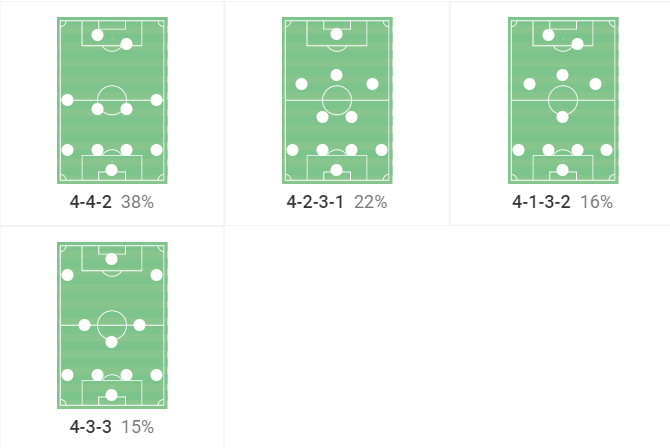
Tite has rarely played the same starting XI twice, but there are a few constants in the team. The goalkeeper will always be one of Weverton, Ederson, and Alisson. Marquinhos and Éder Militão are usually the two centre-backs with Thiago Silva occasionally making an appearance. Casemiro starts as the six and Neymar will play somewhere in the attack. Every other position is constantly changing.
Firstly, Brazil has been struggling with the right-back position. Emerson Royal’s inconsistency has seen Tite opt for a 38-year-old Dani Alves. Danilo was Tite’s go-to man but hasn’t been called up lately. At the left-back position, there are three names. Renan Lodi provides a more attacking option but has fallen out of favour after his costly mistake in the Copa América final. Alex Telles is another, but Alex Sandro has been a far more reliable option. However, the Juventus left-back does not provide as much attacking support as the others. From Casemiro onwards, there is no set structure. Fred, Lucas Paquetá, Gerson, Antony, Raphinha, Vini Jr., Coutinho, Gabriel Jesus, Matheus Cunha, Gabi, and Rodrygo have all been used. They all provide different contributions and have played in different systems. Now, we will take a look at Tite’s most common attacking variations.
Attacking Variations
Regardless of the formation used, Tite will most often look to attack in a 3-2-5. This structure can be set up through many different forms and will all depend on the players on the pitch. It may also depend on the opposition. Against Paraguay, for example, Tite deployed a much more attacking starting eleven. At any rate, the 3-2-5 is commonly used by many of the best teams in the world. It provides a player on each wing, a player in each half-space, and another in the centre. This ensures both depth and width when attacking. Most importantly, it usually pins six defensive players (one extra for cover) and creates numerical superiority in the middle.
As previously stated, the way this 3-2-5 is set up depends on the players available. Inside forwards like Coutinho and Paquetá prefer to operate in the half-spaces whereas inverted wingers like Vini Jr. and Raphinha prefer to start wide. However, this is by no means a defined structure and players should look to constantly occupy different spaces and interchange roles.
The first set-up worth looking at is perhaps the most common. In this one, the left-back pushes up extremely high while the right-back tucks in. This was most commonly done with Renan Lodi as he is very dangerous going forward. The right-back will tuck in to form a back three. Casemiro will be joined by another midfielder to form the double pivot. Against more dangerous teams, Tite will opt for players like Fred or Douglas Luiz, who are more defensive and can cover the left-back. In the attack, the left-winger will play as an inside forward and operate in the left half-space while the right-winger will be wide on the right. The centre-forward will usually remain in the centre, and on the right half-space, there will either be another centre-forward or a central midfielder pushing up.
In the example below, Alex Sandro and Éverton Ribeiro occupy the two wide spaces. Paquetá mainly operates on the left half-space while Gabi has been pushed to the right half-space. Meanwhile, Neymar is central as a false nine.
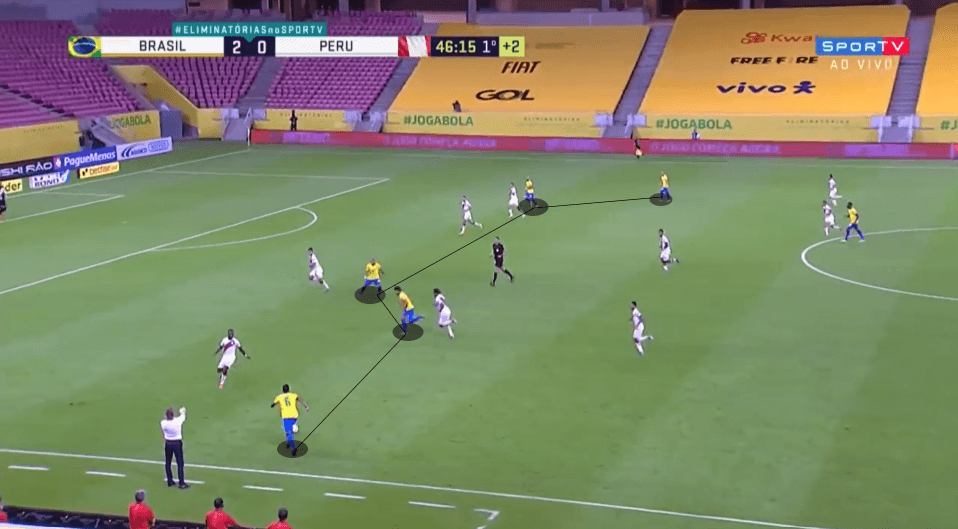
Alex Sandro naturally tends to stay deeper though, closer to the centre-backs. As a consequence, Tite has introduced another variation. Of course, there is the one opposite to the above, where the right-back pushes high and the left-back tucks in. However, the most recent one has been where the right-back becomes the second pivot and the left-back becomes the third centre-back. This is mainly due to the nature of Brazil’s right-backs. Danilo was transformed and often deployed by Pirlo as a defensive midfielder, while Dani Alves can undoubtedly create and defend in the middle. Another reason for this change is the recent form of Brazil’s wingers. Vini Jr., Raphinha, and Antony have all been superb for both club and country, and this was Tite’s way of fitting them into the squad. They best operate on the wide sector, making it impossible to push the fullbacks up.
Brazil’s most recent match, against Paraguay, saw this variation. This time Alex Telles formed the back three while Dani Alves joined Fabinho in the midfield. This variation, specifically in this match, saw Coutinho perform really well. With four other dangerous attackers, Coutinho was able to operate on his favourite half-space and drop in between the lines to create.
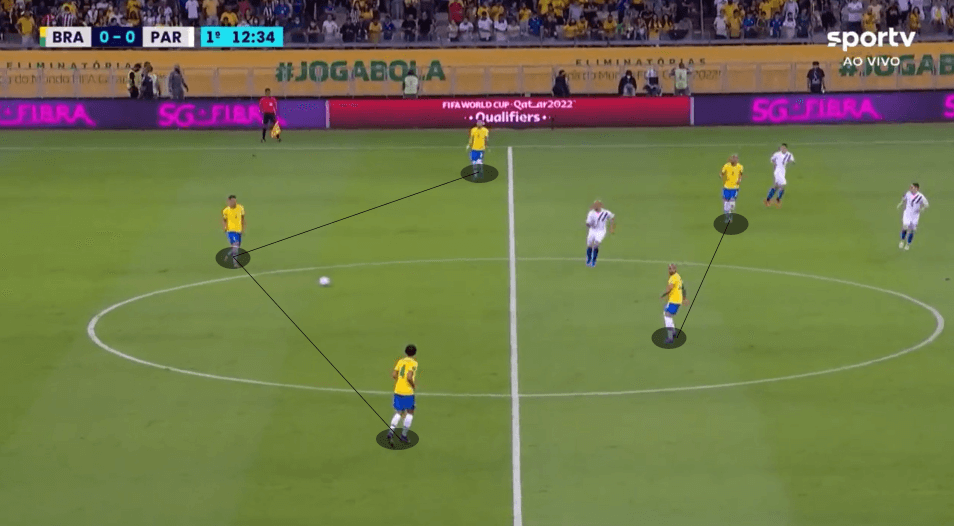
A more traditional attacking variation is the 4-2-4. This variation isn’t as attacking and provides a safer option against counterattacks. It is more common for Tite to deploy this against tougher opponents like Argentina. However, it does limit Brazil’s attacking threat. The fullbacks will push wide, but not too high, and a double pivot is common in front of the four. Alongside either Casemiro or Fabinho, Tite will deploy a more creative midfielder such as Paquetá or Gerson. The attack consists of a free-flowing front four. Players are often interchanging positions and occupying different spaces. A good example of this can be seen against Venezuela. The right-winger, Éverton Ribeiro, and centre-forward, Gabriel Jesus, would often rotate positions. Jesus is naturally a centre-forward but is more than comfortable attacking through the wing. Éverton Ribeiro would often drop in to create via the middle. Below is an example of this variation.
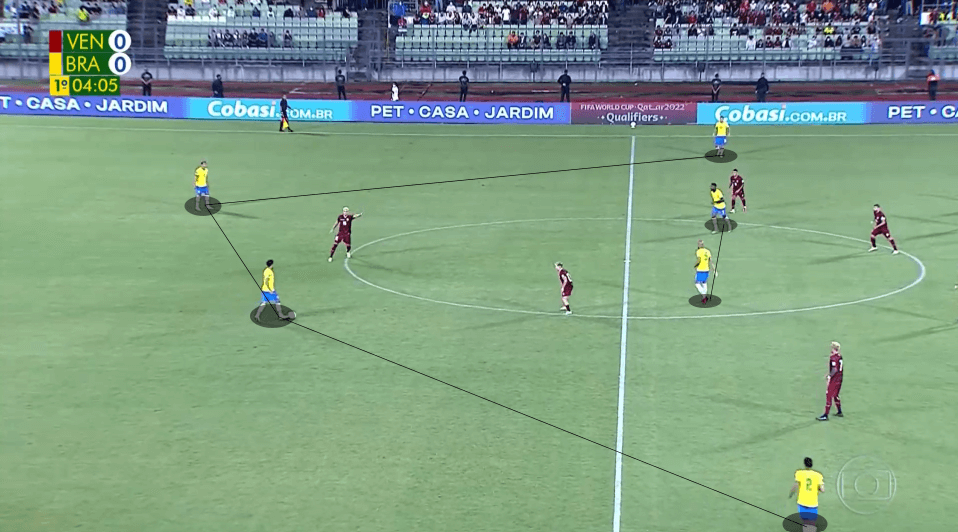
In summary, Brazil plays free-flowing attacking football. Players are instructed with roles rather than positions and are free to interchange them. There are a few variations in how they structure offensively, but all have similar principles. The key, now, is to identify how Coutinho and Neymar fit together within these variations.
Coutinho and Neymar
Some factors contributed to Coutinho’s bad spell at Barcelona, but perhaps the most significant one was his positioning. More specifically, the role he was tasked with performing. At Aston Villa, he is playing as one of two attacking midfielders in Gerrard’s 4-3-2-1. Consequently, he tends to operate in the left half-space. He will find space in between the lines and look to create for others. He may also cut into his right foot and have a shot. It is a very specific role, as he is neither a traditional 10 nor a left-winger. His heat map against Paraguay perfectly illustrates this. He was deployed as a central midfielder in a 4-3-3 alongside Paquetá but had a lot of freedom going up.
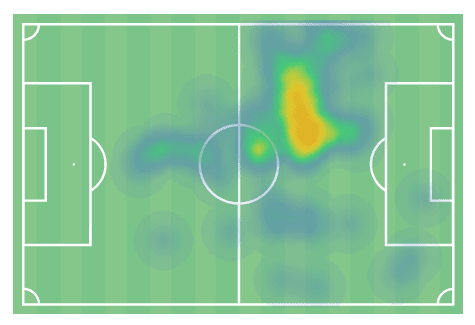
On the other hand, there has been a lot of discussion regarding Neymar’s best position. While he has performed well in a slightly deeper role, many believe he should be closer to the goal. In 2021, Tite often played him in a false nine role in a 4-4-2. In Brazil’s structure, this would see the other centre-forward operate on the right half-space and Neymar in the centre. He was very good at dropping into space and combining with his teammates. Being closer to the goal, he was also involved in creating chances in the final third. In Tite’s structure, the optimal role for him is in the centre as a false nine. However, this often requires another centre-forward to attack the depth and press more intensively.
It is virtually impossible to fit Brazil’s best attackers in the same XI. If Coutinho and Neymar were to be deployed together, some important players would have to get dropped. We will now run through a few possible scenarios and line-ups under Tite’s structure.
The first option is deploying Coutinho on the left-wing in the variation where the left-back pushes up. This would see him operating in his favourite area but would require an attacking left-back. Neymar would be central with another centre-forward on the right side such as Gabi, Cunha, or Jesus. Finally, either Raphinha or Antony would be on the right-wing. While this 4-4-2 would be ideal for the two, it would see Vini Jr. and Paquetá being dropped. Both have been important players for Tite’s side lately.
A more realistic option would be using the variation where the right-back becomes the second pivot and the left-back forms a back three. This allows for five attacking players to be deployed. From left to right, it would be Vini Jr., Coutinho, Neymar, Jesus, and Paquetá. Jesus is better for this role as he can fill the wide spaces if Paquetá drops inside, but also attack the depth and press as a centre-forward.
However, I believe the optimal choice is dropping Paquetá. He has been sensational this season, but finding balance is key. Coutinho and Neymar already provide a lot of support in possession and creation on the ball. Players that can attack space and operate off the ball will be essential — this includes players such as Vini Jr., Raphinha, Antony, Cunha. Essentially, a 4-4-2 with Coutinho and Casemiro in the middle, Vini Jr. and Raphinha wide, and Neymar and Cunha up top. Bringing a right-back such as Dani Alves inside would free Coutinho to go up and operate in his favourite space.
Conclusion
The options are endless. Tite’s Brazil has many attacking variations which allow for flexibility and variation in the team selection. Coutinho and Neymar’s optimal roles are clear, so the key is building a squad around these players. Some important players will have to be dropped, but this essentially gives Brazil a lot of depth on the bench. With the World Cup around the corner, Tite has limited time to figure this out. It will be interesting to see how the two perform together, but most importantly if they will be able to bring Brazil its sixth title.

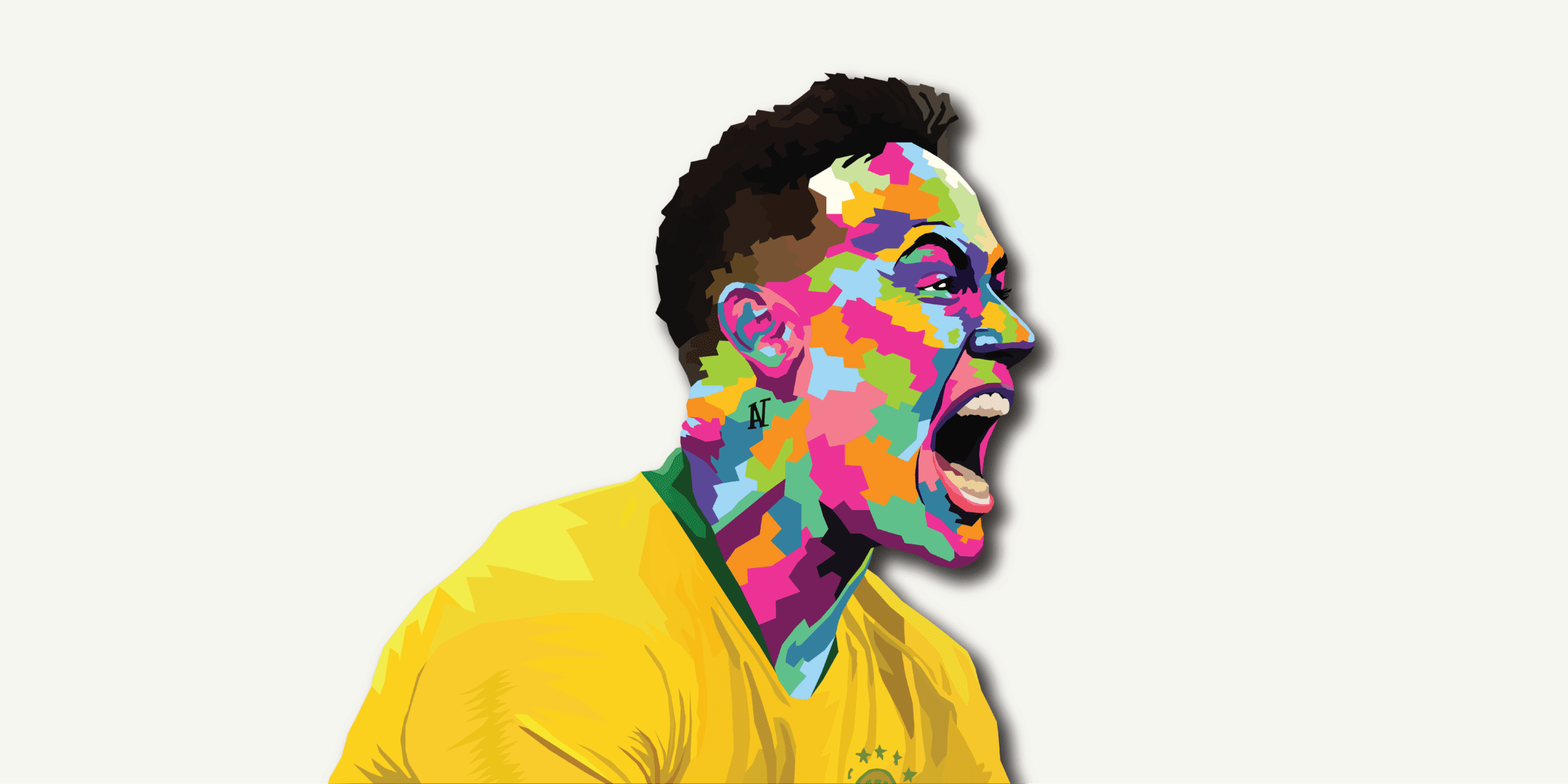



Comments